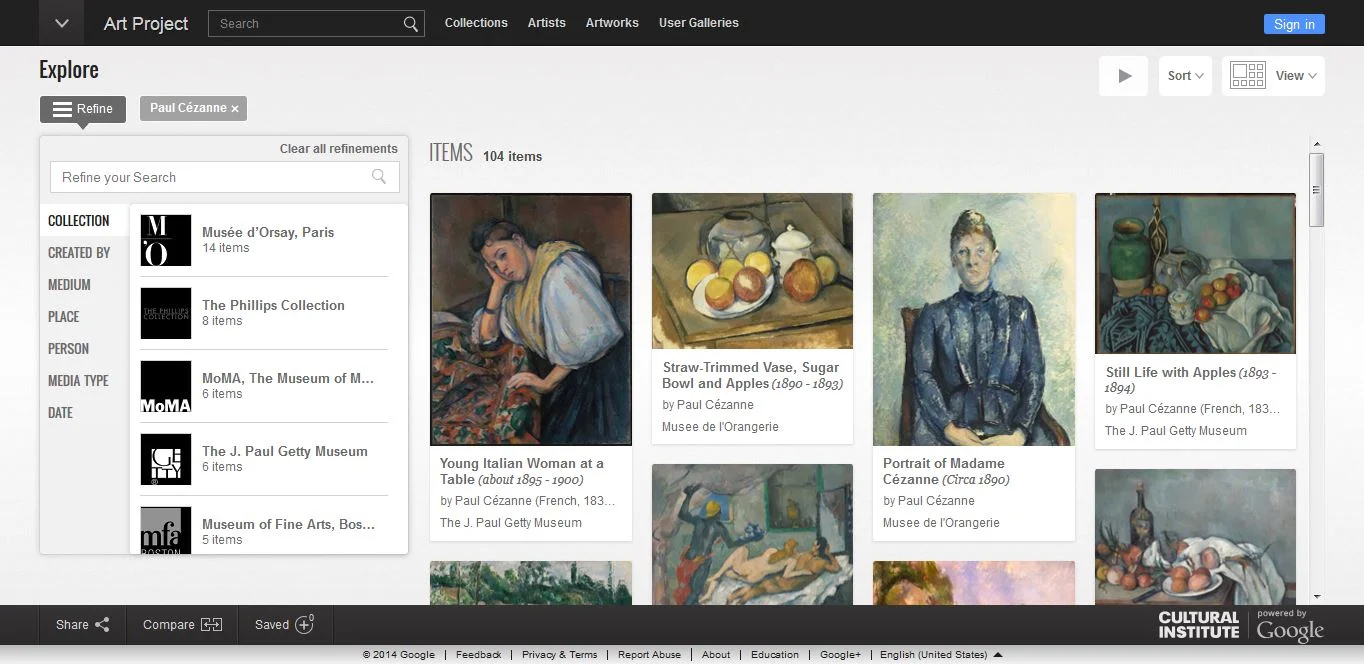Twenty years after Nicholas Pioch established the WebMuseum, online technological innovations make it possible for art museums of all sizes to share their collections with audiences more broadly than ever before. Be it an exhibition that exists solely online or a searchable repository to aid both professionals and casual users, the ability to provide unique artistic experiences for constituents worldwide allows museums to reach individuals who otherwise may not visit the physical premises housing their collections. For those organizations wishing to improve their online presence, how to get started?
Leveraging the Potential of Spatial Data in Artistic Programming
Spatial data--information that relates to or identifies a specific geographic location--are frequently used by the corporate and public sectors to make management decisions, be it to improve shipping logistics or to create a marketing campaign. They can also be an asset for arts organizations seeking to maximize program impact. To better understand how spatial data analysis can help arts organizations, AMTLab presents Using Spatial Data to Advance Programming Missions, the latest white paper in its publication series on management.
Research Update: How to Do an Online Exhibition – Reviewing Award Criteria
If you have an idea about developing an online exhibition for your organization, but aren’t exactly sure how to get from point A to point B, looking at award evaluation criteria is a good place to start. Regardless of whether a project will be designed to win a certain prize, award evaluation criteria provide insight on what is considered by the field to be good practice, and shed insight on the narrative possibilities that are unique to the web.
Research Update: How to Do an Online Exhibition?
The ArtProject is a collaboration between Google and numerous cultural institutions, with Google providing an enormous amount of technological resources and human expertise behind the project, The WebMuseum, on the other hand, is reminiscent of an DIY era, “No support, no funding, no manpower: the WebMuseum is a collaborative work of its visitors contributing to expand and improve the WebMuseum.” It’s interesting to note that the crowdsourcing component remains a constant, even if the ArtProject tackles it in a much more structured, or even curated, way.
Online Tools for Artists & Audiences: A Case Study of the Pittsburgh Artist Registry and Pittsburgh Art Places
2013 was a busy year for the Office of Public Art (OPA) here in Pittsburgh. Along with its regular duties of programming public art walking tours, organizing calls for entries, and facilitating webinars and artist lectures, OPA also re-edited its book Pittsburgh Art in Public Places, revamped the Pittsburgh Artist Registry, and created the Pittsburgh Art Places website.
The following article analyzes how this organization, a public-private partnership between the Greater Pittsburgh Arts Council and the City of Pittsburgh Department of City Planning, made management decisions that led to the update of the online artist registry and creation of Pittsburgh Art Places.
Implementing a New Collection Management Application: Colección FEMSA
Colección FEMSA specializes in travelling exhibitions for Mexican and international institutions. A nine-person team manages all aspects of planning, from building crates and preventive conservation to facilitating partnerships with museums and other cultural organizations, culminating in up to twelve different shows each year. While a relatively small collection, the management challenge for this organization is having artwork constantly on the move. This case study concentrates on how Colección FEMSA meets this challenge through the help of a collection management application, Spaces for Art.
Research Update: Using Spatial Data to Advance our Programming Missions – Where will I get the data?
As I continued to research how arts organizations can use spatial data to advance their programming missions, and looked at the volume of data already available, numerous scenarios come to mind. Spatial data can be used to evaluate a traveling exhibition proposal or a public art site, develop a grant-making or educational program, or identify potential partnerships.
Research Update: Using Spatial Data to Advance our Programming Missions
Using data to design marketing campaigns is great. Using data as an accountability tool to report back to our funders is also great. Even if we’re not leveraging it to its full potential, most of us would agree on the last two statements. It’s when we start talking about incorporating data-driven-decision making to our programming that things start to get complicated.












